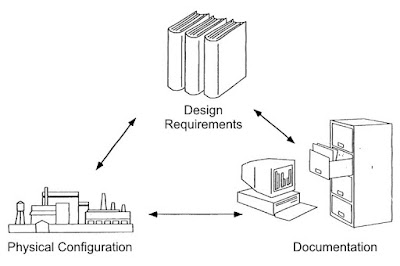Configuration Management System - A Quick Refresher for PMP
 According to the PMBOK® Guide, 5th Edition, Configuration Management System is a subsystem of the overall Project Management System. It is a collection of formal documented procedures used to apply technical and administrative direction and surveillance to: identify and document the functional and physical characteristics of a product, result, service, or component; control any changes to such characteristics; record and report each change and its implementation status; and support the audit of the products, results, or components to verify conformance to requirements. It includes the documentation, tracking systems, and defined approval levels necessary for authorizing and controlling changes.
According to the PMBOK® Guide, 5th Edition, Configuration Management System is a subsystem of the overall Project Management System. It is a collection of formal documented procedures used to apply technical and administrative direction and surveillance to: identify and document the functional and physical characteristics of a product, result, service, or component; control any changes to such characteristics; record and report each change and its implementation status; and support the audit of the products, results, or components to verify conformance to requirements. It includes the documentation, tracking systems, and defined approval levels necessary for authorizing and controlling changes.
This definition is self-explanatory, isn’t it? Well not quite. Unfortunately, this is a topic which isn’t explained well in PMP prep guides. Even though most of us are using Configuration Management is some form or another on our projects, many PMPs and PMP aspirants I have talked to, do not understand this topic well. This article is the first in a series of articles that I’ll do Configuration Management System. My aim is to present the information in a clear, concise and practical manner to help you understand this topic well. I may cross the boundaries of the PMP exam curriculum. I hope you will find the information useful.
Key Concepts about Configuration Management System
In this article, I’m listing the main concepts related to Configuration Management System that you need to know for the PMP Certification. I’m not covering any of them in detail. In follow-up articles, I’ll cover some of these points in detail.
- Configuration Management is focused on the functional or physical characteristics of the "product" (or deliverables of the project). Most of us who have worked on projects have used Configuration Management. In the context of IT systems, Configuration Management can be applied to hardware, software and network configurations. Manufacturing companies use complex Product Lifecycle Management (PLM) systems to manage configuration of their products (such as mobile phones, cars, airplanes) throughout the lifecycle of the product. For those who are interested to learn more, I'm going to cover product configuration in detail in a follow-up article.
- Configuration Management is applied throughout the lifecycle of the product. It extends beyond the boundaries of a project.
- Configuration Management also applies to the "project". Project Configuration Management is a collection of processes, activities, tools and methods to manage the configuration of project management artifacts such as Contracts, Statement of Works, Work Breakdown Structure, Project Management Plan, Risk Register, Work Performance Information, Performance Reports, Metrics, etc. You can refer to Practice Standard for Project Configuration Management from PMI for more details. By the way, this standard is available free of cost to PMI Members.
- Configuration Management System is a part of the overall Project Management Information System (PMIS). Change Management System is a subset of the Configuration Management System. Refer to the diagram for a pictorial representation of this concept.

- Configuration Items (CI) are items which are placed under configuration control. It may include product, its components, documentation or project artifacts (examples mentioned above).
- Not all Configuration Items (CI) need to go through formal Change Control process.
- Configuration Management Plan is a subsidiary of the main Project Management Plan.
- Configuration Management Plan defines:
- Configuration Items (items which need to be placed under configuration control)
- Items that require formal change control
- The process for controlling changes to such items (Change Control process)
- Configuration Management System has 4 main aspects:
- Configuration Identification
- Configuration Control
- Configuration Status Accounting
- Configuration Verification and Audit
These have been reviewed in detail in - The Four Components of a Configuration Management System. - Configuration Control and Change Control are distinct but related activities. Read Configuration Control and Change Control - Similar yet Distinct for more information.
I hope this article gives you a high level overview of the concepts related to Configuration Management System. Stay tuned for at least 3 more articles in this series. Please give me your feedback and let me know if any course correction is necessary.
3-part series on Configuration Management
- Configuration Management System - A Quick Refresher for PMP (you are here)
- Configuration Control and Change Control - Similar yet Distinct
- The Four Components of a Configuration Management System
Image credit: Wikimedia Commons
14 Comments
Sir Chawlz
Harwinder Singh
Suresh Babu
Harwinder Singh
M B HUssain
Anonymous
John
Arun
Anonymous
Harwinder Singh
Quốc Hùng
Harwinder Singh
Anonymous
Harwinder Singh